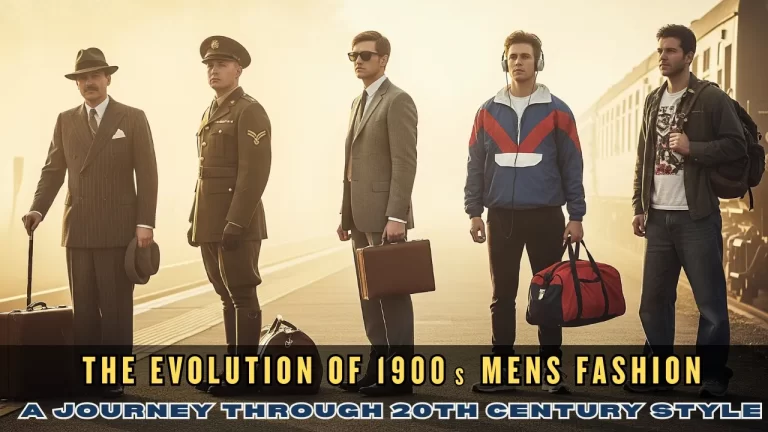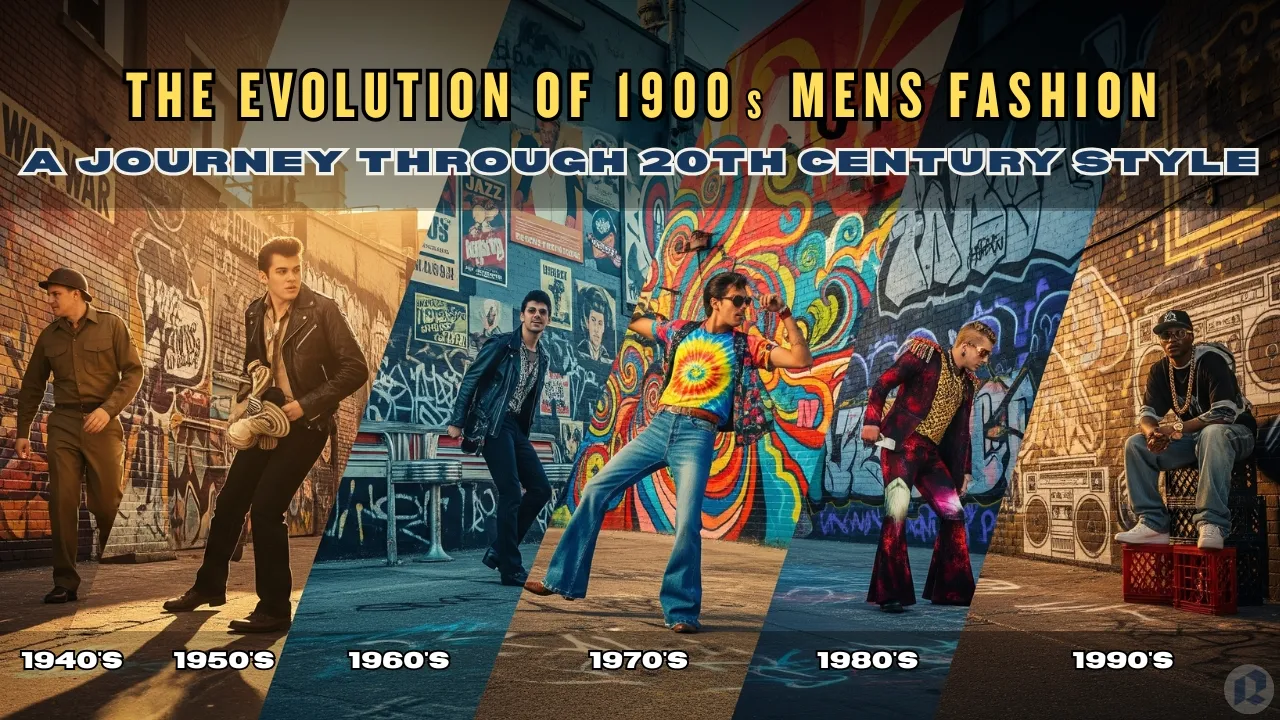
The Evolution of 1900s Mens Fashion: A Journey Through 20th Century Style
1900s mens fashion isn’t just about fabric – it’s history stitched into every seam. And when it comes to men’s fashion, the 1900s marked a defining moment. Across the 20th century, men’s clothing went through a radical evolution – from starched collars and waistcoats to flannel shirts, bomber jackets, and oversized jeans. This article traces that journey, decade by decade, exploring how style responded to war, rebellion, pop culture, and shifting ideals of masculinity.
Why the 1900s Marked the Birth of Modern Men’s Style
When we think of the 1900s, it’s easy to imagine top hats and pocket watches. But look closer, and you’ll see the foundations of what would become modern menswear.
At the dawn of the century, men dressed with rigid formality. The Edwardian silhouette dominated: high-buttoned vests, stiff collars, and morning coats were everyday wear. But subtle changes were already beginning – trousers were loosening slightly, shirts were becoming more accessible, and the idea of ready-to-wear clothing was gaining traction.
This was the moment where style began shifting from pure formality to personal expression. While tailored suits still reigned, the seeds were planted for casualwear, comfort, and mass-market fashion to bloom in the decades ahead.
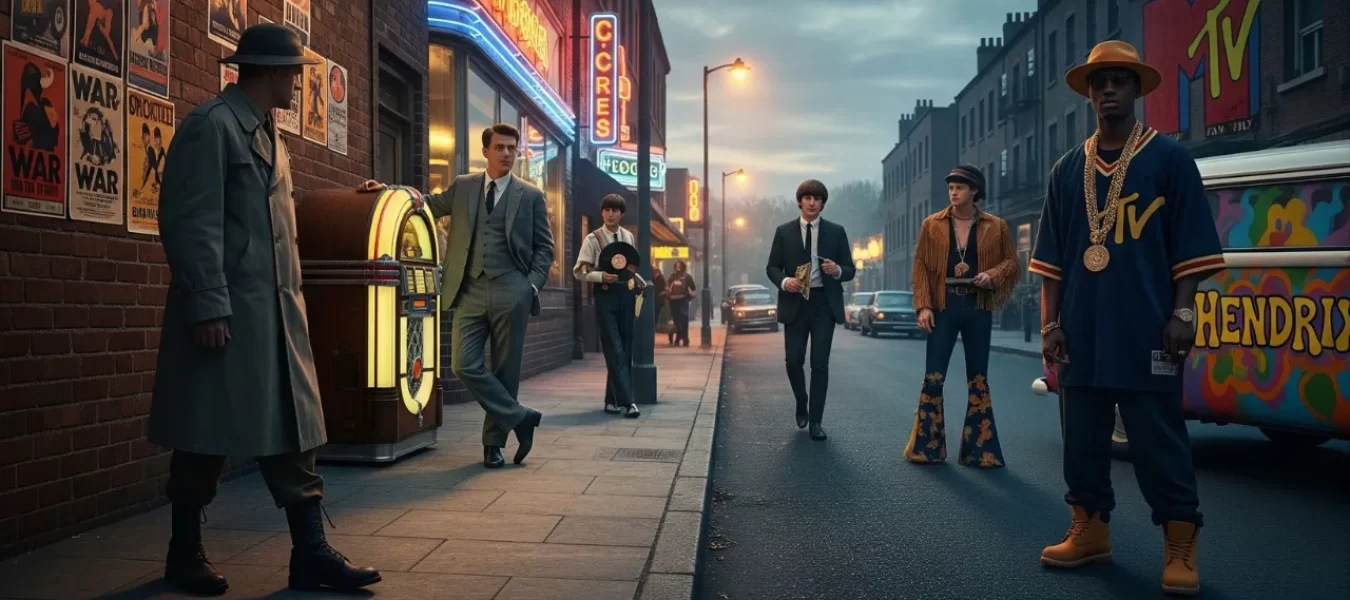
From Formal to Functional: How Men’s Fashion Evolved Across the Century
Through the 20th century, menswear gradually shed its layers – literally and metaphorically. What began with rigid structure slowly gave way to clothes made for movement, work, and self-expression.
- In the 1920s, fashion flirted with flair – wide-legged trousers and patterned knitwear reflected a post-war sense of freedom.
- By the 1940s, war efforts demanded practicality. Uniform-inspired jackets, broad shoulders, and neutral palettes became common.
- The 1950s introduced the idea of “casual cool” – camp-collar shirts, cuffed jeans, and the birth of teenage rebellion, thanks to Hollywood icons like James Dean.
- And by the 1980s, fashion became almost theatrical: 80s men’s fashion trends exploded with oversized tailoring, vibrant color blocks, and glossy materials.
Across each decade, the shift from form to function also mirrored the shift in identity – from men dressing for society to dressing for themselves.
Cultural Forces Behind 20th Century Men’s Fashion (War, Music, Media)
Fashion doesn’t exist in a vacuum. Each era’s dominant styles were shaped by the world outside the closet:
- World Wars (1910s–1940s): Military uniforms heavily influenced silhouettes – trench coats, combat boots, epaulets, and khaki became staples.
- Post-war Prosperity (1950s): As economies recovered, so did aesthetics. Sharp tailoring returned, but youth began pushing against norms.
- The 1960s–70s: Music became a style leader. The Beatles popularized the Mod look, while Jimi Hendrix brought in psychedelic prints and fringe.
- The 1980s and 1990s: MTV and hip hop had massive impact. Suddenly, fashion wasn’t just following pop culture – it was driving it. 90’s fashion men’s hip hop looks – oversized jerseys, gold chains, and Timberlands – originated from this cultural intersection.
Cultural events created fashion reactions. Sometimes they were subtle – like longer ties after the Great Depression. Other times, they were revolutionary – like the rise of unisex dressing during the late 1960s.
What Makes 1900s Mens Fashion Still Relevant Today
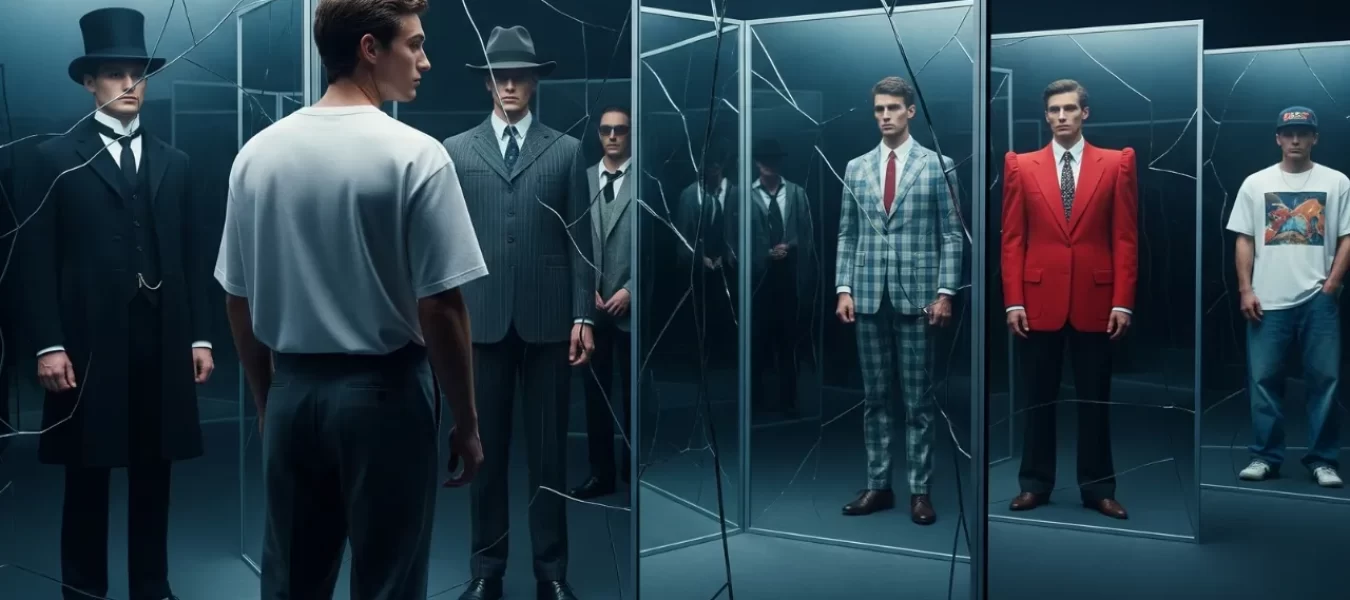
Even now, traces of 1900s mens fashion show up in contemporary wardrobes. The appeal? Timeless structure and attention to detail.
- The three-piece suit, reimagined for the modern man, still owes its structure to the Edwardian era.
- High-waisted trousers, now trending again on runways, reflect 1930s silhouettes.
- Rounded shirt collars, brogue shoes, and cufflinks all whisper of a more refined era – but one that today’s designers love to revisit.
As sustainability becomes a fashion priority, many are looking back to the tailoring traditions of the early 20th century – built to last, cut with care, and never wasteful.
How This Timeline Reflects Generational Identity and Lifestyle
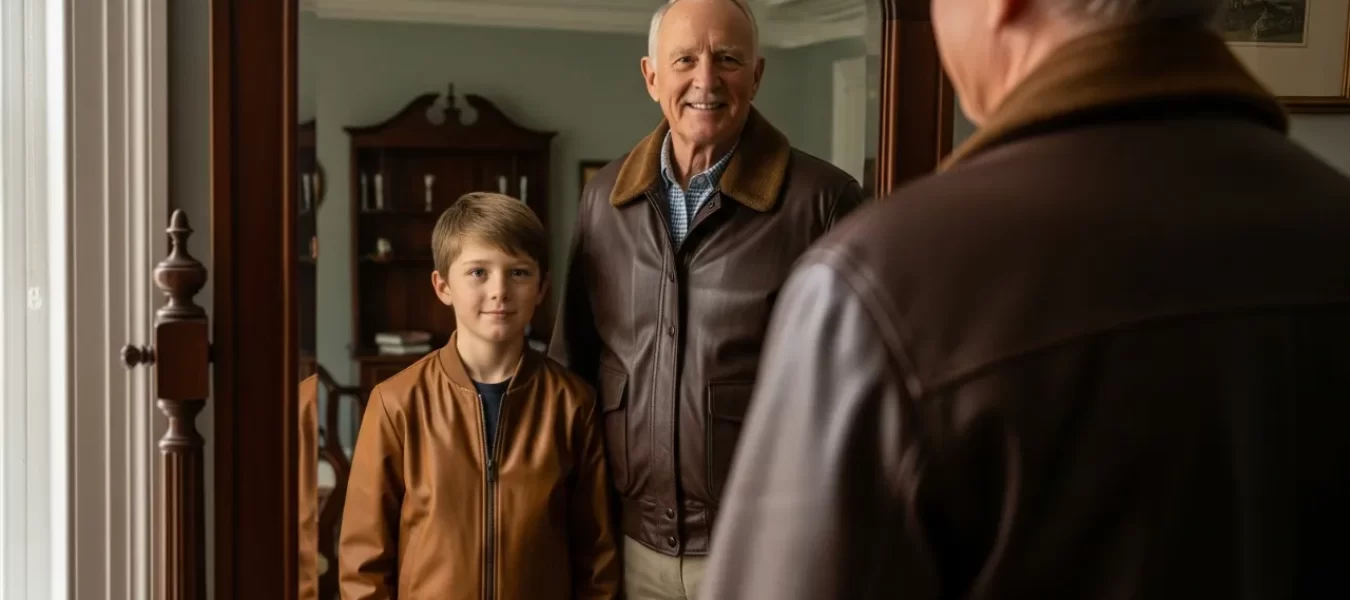
Each fashion shift in the 20th century tells a story of who men were trying to be – or trying to reject.
- The 1920s Dandy: Confidence through color and flair, finally breaking free from war-era austerity.
- The 1950s Rebel: T-shirts, jeans, and leather jackets shouted youth independence.
- The 1970s Free Spirit: Flared trousers and patterned shirts reflected a generation rejecting conformity.
- The 1990s Minimalist & Outsider: From normcore to grunge, men either blended in or dared to stand out.
By following fashion, we trace the evolution of men’s roles in society – from provider to professional to personality. Clothing became not just protection or performance – it became identity.
Style as Legacy: Why Nostalgic Menswear Keeps Coming Back
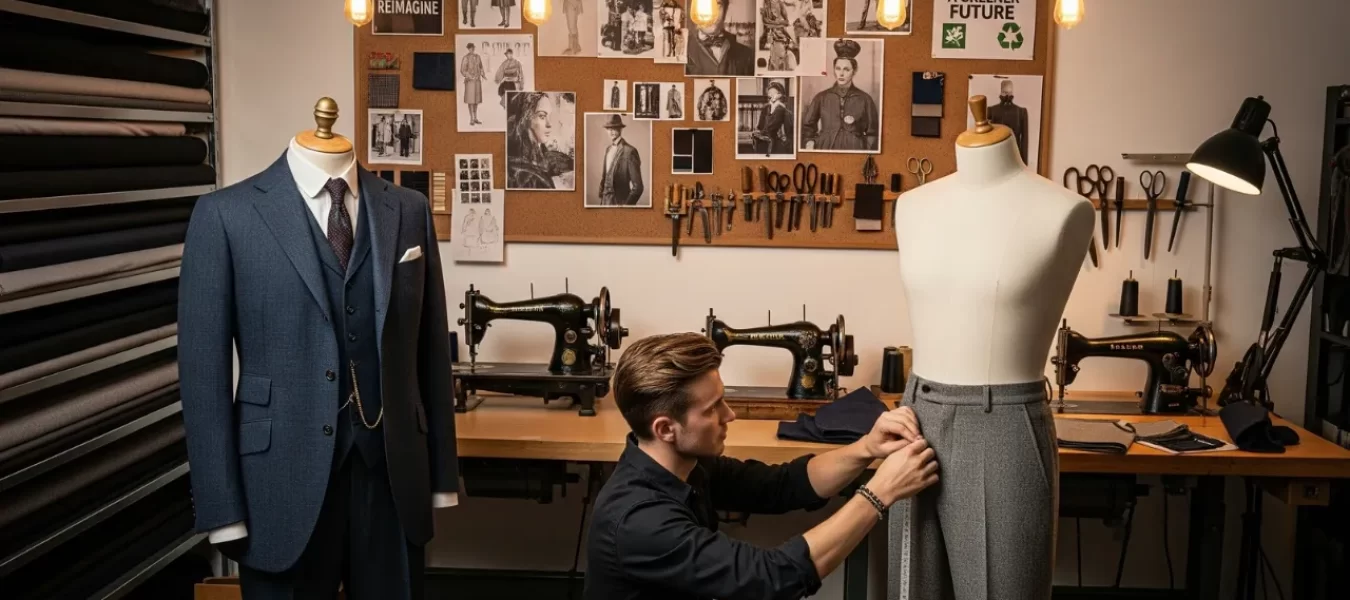
There’s a reason 1980s men’s fashion, 1950s men’s fashion, and even 70s mens fashion keep making comebacks. It’s not just about trends – it’s about emotional connection.
Vintage fashion is storytelling. Wearing a bomber jacket from the ’40s or styling a 90s windbreaker isn’t just about looking cool – it’s about connecting to a time, a feeling, a cultural movement.
In menswear, legacy is everything. The structure of a jacket, the shape of a collar, the weight of a boot – these elements carry decades of stories. Whether it’s the elegance of the 1900s or the edginess of the 1990s, men’s fashion across the 20th century has never stopped influencing how we dress today.
1900s Mens Fashion: The Edwardian Era and the Age of Tailoring
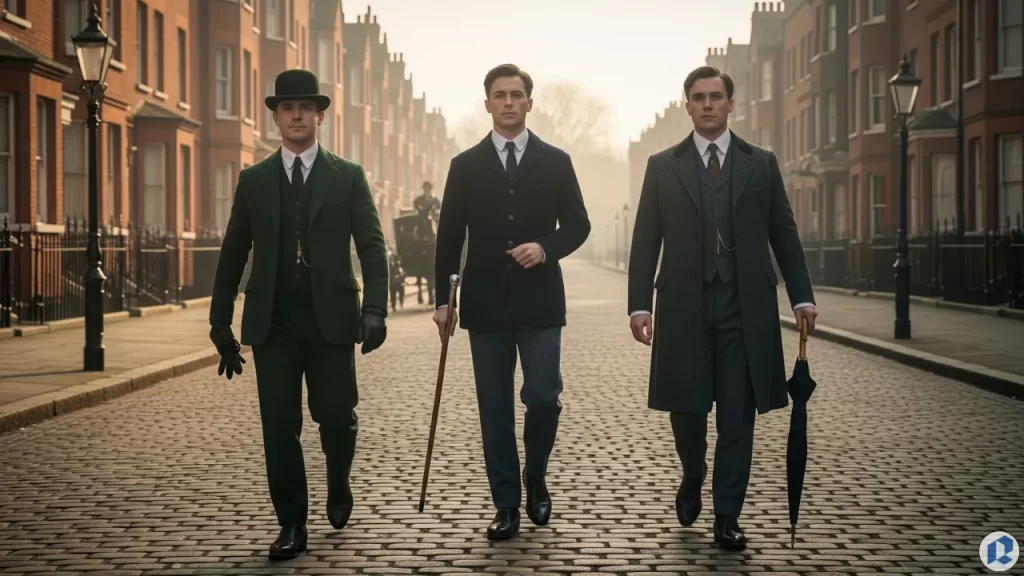
If there’s a single word that defines 1900s mens fashion, it’s structure. In the early 20th century, men’s style was dictated by the Edwardian code of elegance, which prized formality, restraint, and precision tailoring.
Men typically wore three-piece suits composed of a frock coat or lounge jacket, waistcoat (vest), and high-waisted trousers. These garments were often made of heavy wool, herringbone tweed, or worsted fabrics – designed for durability and sophistication. The color palette leaned toward dark neutrals: charcoal, navy, and deep forest green. Shirts were stiff-collared and often detachable for ease of laundering.
Accessories played a significant role. Pocket watches, leather gloves, bowler hats, and walking canes were part of daily attire for professionals and gentlemen. Shoes were polished oxford or brogue styles, with spats occasionally worn for formality.
This era’s focus on grooming and sharp tailoring laid the foundation for men’s fashion as we know it today. Even modern-day suits, when tailored well, echo the silhouette and discipline of the Edwardian wardrobe.
1920s–1930s: Suits, Speakeasies, and Depression-Era Dressing
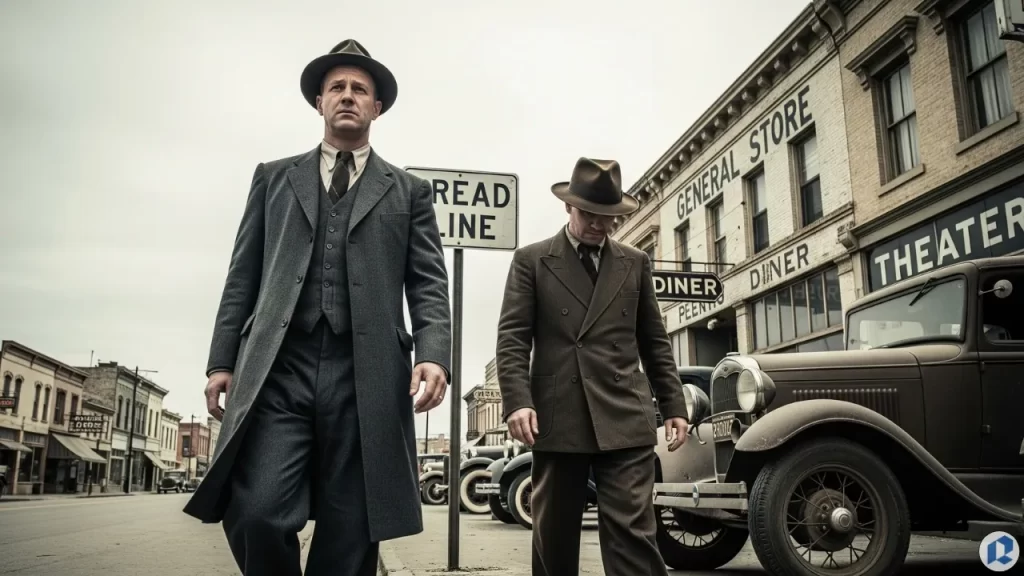
The Roaring Twenties brought a seismic shift in men’s fashion. After World War I, there was a collective desire to shed somberness and embrace style and social freedom. This translated into wider trousers, shorter suit jackets, and more adventurous fabrics and colors.
The 1920s man – whether a jazz club regular or a speakeasy patron – might wear a pinstripe suit with a wide peak lapel, a silk pocket square, and a two-tone brogue. Bow ties and suspenders were common. Hats remained a staple, with fedoras, boaters, and newsboy caps dominating.
By the 1930s, the Great Depression tempered that flamboyance. While suits were still the standard, fabrics became heavier, and styles more conservative. Jackets extended slightly longer, often with padded shoulders that introduced a more authoritative look.
This period also gave rise to Hollywood glam – men like Clark Gable and Fred Astaire popularized double-breasted suits, sleek hair, and refined evening wear. Even in hard times, style was about dignity.
1940s Men’s Fashion: Wartime Simplicity Meets Military Style
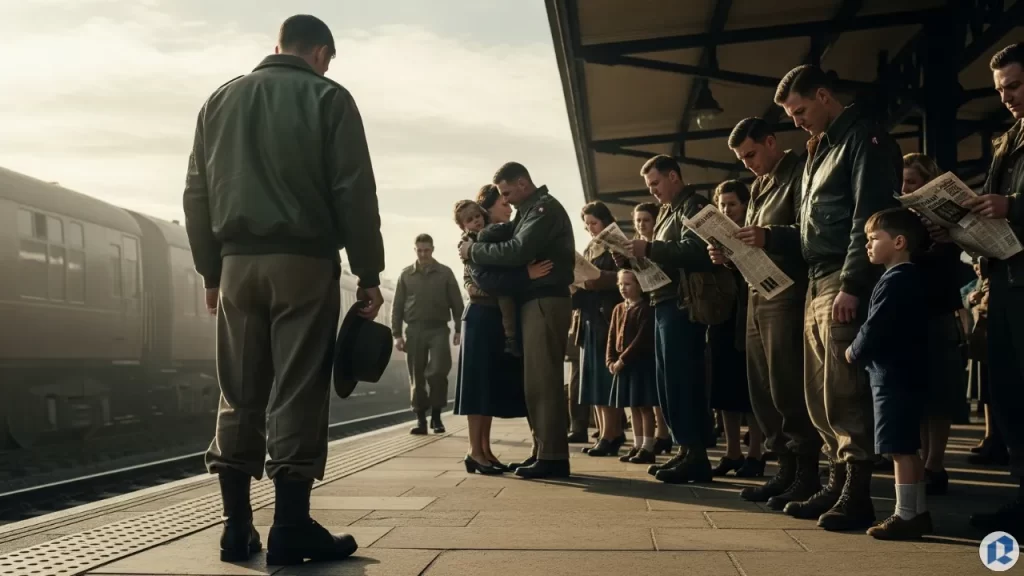
In the 1940s, the world went to war again – and fashion followed suit. Materials like wool, rubber, and leather were rationed, leading to a simplified, function-first approach to clothing. Civilian men often wore suit separates or recycled military garments adapted for daily use.
Trench coats, inspired by army-issued gear, became a civilian staple. Bomber jackets and peacoats transitioned from military service into everyday fashion. Khaki and olive green tones became more acceptable outside of the barracks.
Suits during this decade were characterized by:
- Broad shoulders and nipped-in waists
- Single-breasted jackets (to conserve fabric)
- Straight-leg trousers, slightly cropped
Accessories were minimal. Ties were narrow and often reused. Hats persisted but were more practical than stylish.
Despite the minimalism, 1940s men’s fashion cemented a legacy of functional masculinity. Post-war, this influence lingered as veterans returned home and brought military precision into peacetime wardrobes.
1950s Men's Fashion: Casual Cool, Rebel Youth, and Postwar Precision
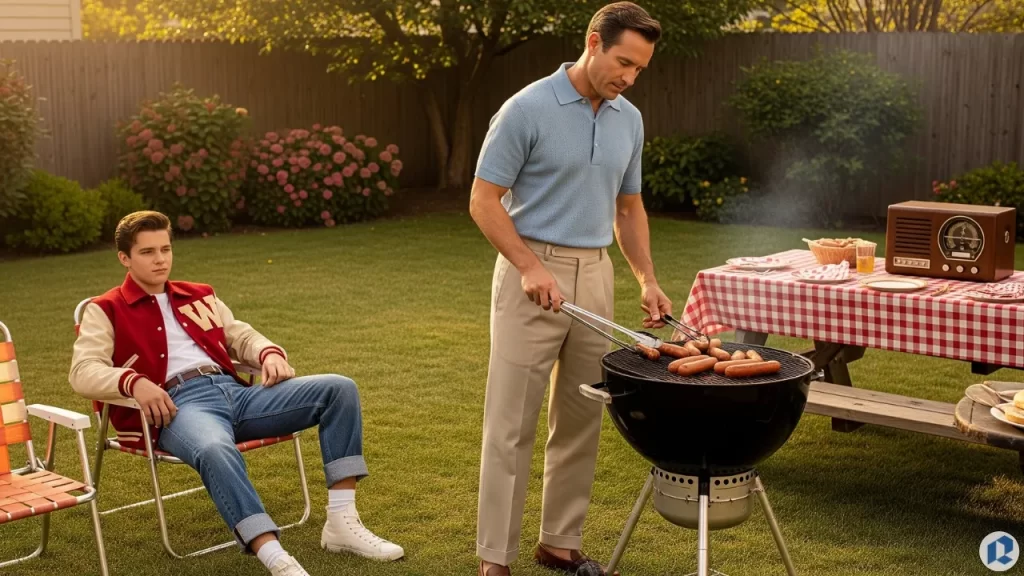
The 1950s were a tale of two styles. On one hand, there was the clean-cut, polished look favored by working men and suburban dads. On the other, the rise of youth culture and rebellion sparked a fashion revolution among younger men.
Mainstream 1950s fashion embraced neatness and structure. Men wore charcoal grey or navy suits, crisp white shirts, narrow ties, and polished leather shoes. Think Mad Men or JFK on a campaign trail.
But the youth had other plans. Inspired by Hollywood icons like James Dean and Marlon Brando, teenage boys adopted a rugged, rebellious look. This meant:
- White T-shirts under leather jackets
- Cuffed blue jeans (often Levi’s 501s)
- Black boots or high-top sneakers
- Slicked-back hair and attitude to match
This was also the decade when casualwear became socially acceptable. Knit polo shirts, letterman jackets, and bowling shirts started to replace button-downs on weekends.
The 1950s mens fashion legacy is enduring – because it was the first time style truly split between generations, and young men started dressing for themselves, not to impress society.
1960s Men’s Fashion: Mod Movement, Slim Cuts, and Colorful Risks
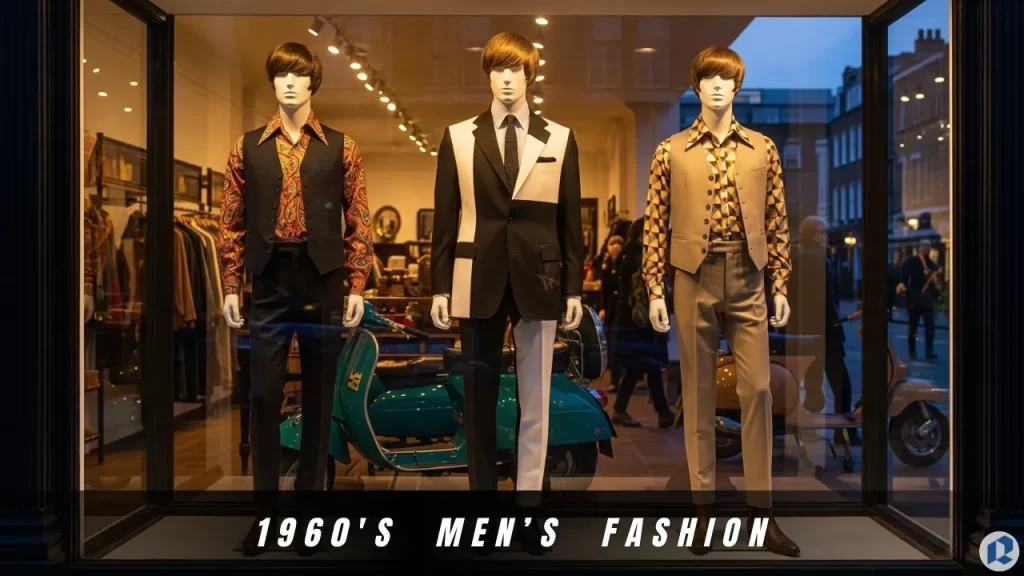
If the 1950s planted the seeds of individuality, the 1960s watered them – and then some. The early years of the decade still echoed 1950s conservatism, but by mid-decade, men’s fashion exploded with experimentation.
At the heart of the movement was London’s Mod subculture. British youth ditched dull tailoring and embraced:
- Slim-cut suits in unconventional fabrics
- Turtlenecks under blazers
- Chelsea boots
- Paisley shirts and monochrome color-blocking
The Beatles popularized mop-top hair and collarless suits. Meanwhile, American youth began dressing more freely – denim, fringe jackets, and tie-dye marked the era’s more radical end.
60s men’s fashion also began merging eastern influences, with Nehru jackets, beaded necklaces, and loose silhouettes showing up as the decade closed.
It was a style revolution fueled by music, peace protests, and political change. And for the first time, men weren’t just dressing for work or women – they were dressing to express ideals.
1970s Men’s Fashion: Disco Flair, Corduroy Everything, and Retro Rebellion
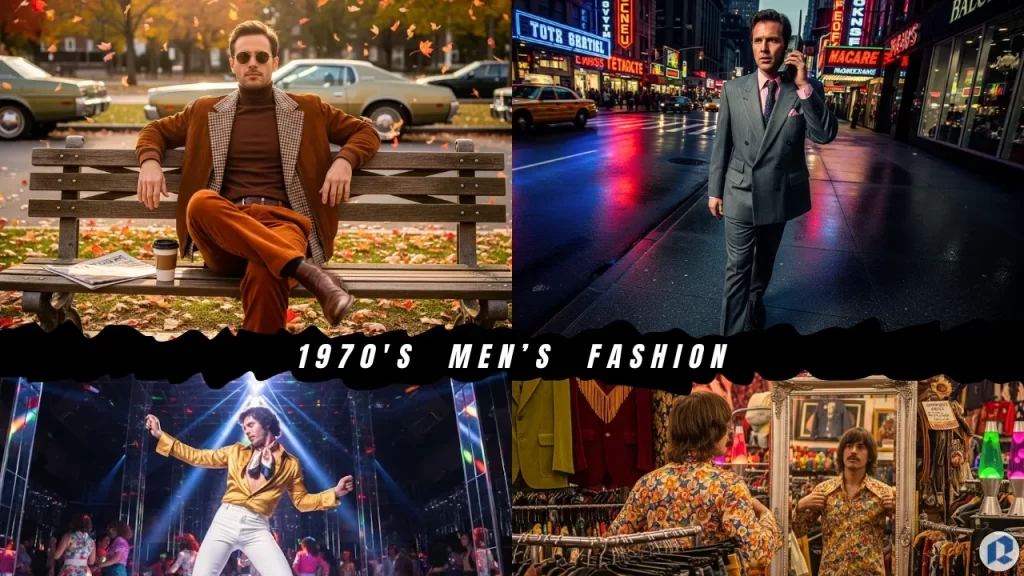
Welcome to the most flamboyant decade of the century. The 1970s were full of fashion contradictions – and that’s what made them unforgettable.
Disco culture glamorized shine: satin shirts, flare pants, silk scarves, and platform shoes lit up dance floors. Bold prints – floral, psychedelic, geometric – weren’t just encouraged; they were mandatory. Everything was unbuttoned, tight-fitting, and unapologetically expressive.
On the flip side, the rise of earthy, retro rebellion brought a wave of corduroy trousers, plaid jackets, wide lapels, and suede bomber jackets. Denim reigned supreme, especially in bell-bottom form.
Hair grew long. Mustaches became status symbols. And style broke every rule – on purpose.
While the 70s men fashion trends sometimes feel excessive in hindsight, their celebration of individuality and freedom paved the way for every bold fashion statement that followed – from the 80s power suit to the 90s skater look.
1980s Men's Fashion: Power Dressing, Pop Icons, and Bold Color
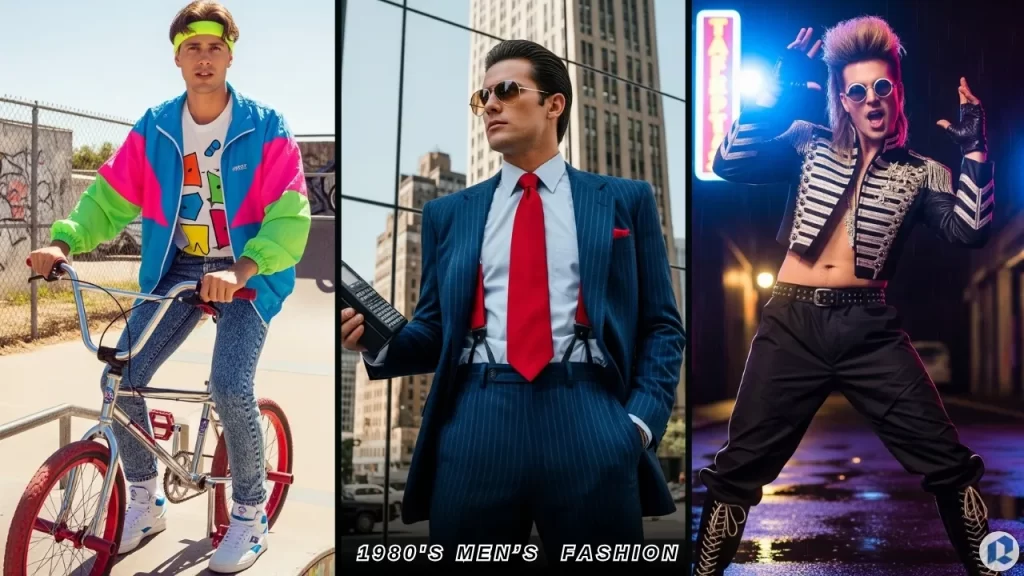
Step into the 1980s, and you’ll find a world where bigger meant better – and men’s fashion was no exception. The decade of Wall Street, glam metal, and MTV brought with it a sartorial surge of confidence, excess, and energy.
At the office, power dressing dominated. Men wore boxy suits with padded shoulders, pinstripes, and wide ties. The goal? Exude success, masculinity, and financial dominance. Gordon Gekko from Wall Street wasn’t just a character – he was a style template.
Off the clock, things got even bolder. Inspired by pop culture icons like Prince, Michael Jackson, and George Michael, men embraced leather jackets, cropped military-style coats, lace-up boots, and mirrored sunglasses. Hair? Bigger. Colors? Louder.
80s men’s fashion included:
- Neon windbreakers and acid-wash jeans
- Graphic tees with oversized prints
- Parachute pants and athletic wear as everyday style
- High-top sneakers, most iconically Nike and Reebok
It was a time when fashion became performative – a full-body statement of attitude and ambition. Though not every look stood the test of time, the 80s taught men that fashion could be fun, theatrical, and deeply personal.
1990s Men’s Fashion: Grunge, Hip Hop, and Minimalist Streetwear
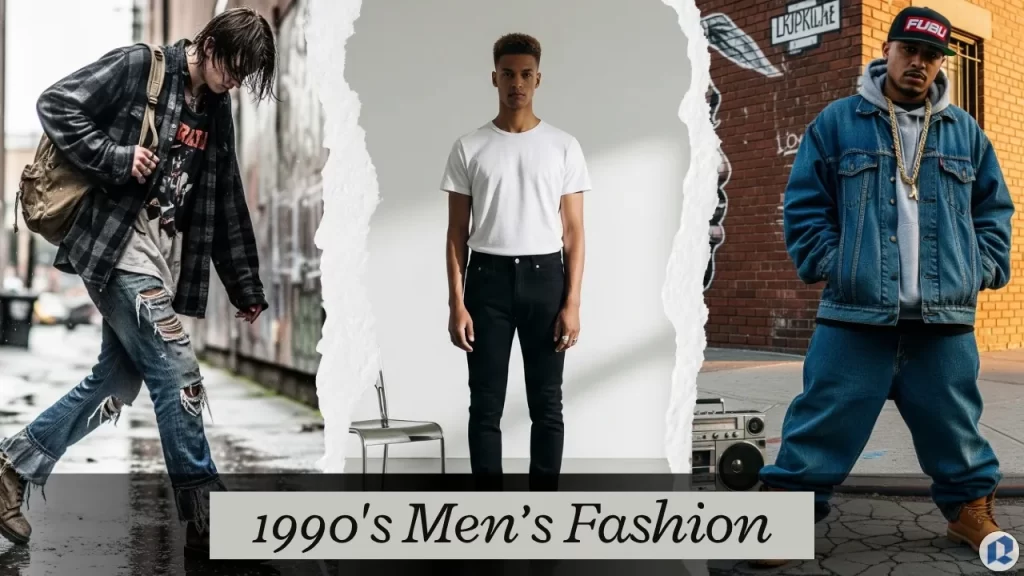
The 1990s rebelled hard against 80s excess. It was as if men across the globe collectively said, “Let’s take it down a notch.” And they did – with attitude.
Grunge came out of Seattle and took over streetwear. Think flannel shirts, ripped denim, combat boots, and oversized sweaters. Bands like Nirvana made dressing like you didn’t care the ultimate power move.
Meanwhile, hip hop fashion was on the rise. Artists like Tupac, Nas, and A Tribe Called Quest influenced the rise of:
- Baggy jeans and oversized jackets
- Timberland boots, hoodies, and gold chains
- Sportswear brands like FUBU, Tommy Hilfiger, and Adidas becoming street staples
On the other side of the spectrum, minimalism took hold in high fashion. Designers like Calvin Klein and Helmut Lang championed clean silhouettes, neutral tones, and quiet luxury. White tees, slim jeans, and black boots defined cool for a different crowd.
Men’s fashion in the 1990s didn’t just have range – it reflected culture in flux. Whether you were skater, rapper, or minimalist, there was a lane that fit your lifestyle – and that’s what made it iconic.
Fashion That Didn’t Age Well: The Good, the Bad, and the Loud

As we look back on a century of men’s fashion, not every moment shines.
- Good:
- The structure and elegance of the Edwardian era
- 1950s casualwear innovation
- 1980s experimentation with proportion and color
- 1990s comfort-meets-cool mentality
- The structure and elegance of the Edwardian era
- Bad (or at least questionable):
- Shoulder pads that could take flight
- Corduroy suits in shades no one asked for
- Too-short ties of the 60s
- Hammer pants, mesh tops, and plastic accessories
- Shoulder pads that could take flight
Still, even the “bad” helped define eras – and that’s the beauty of fashion. It evolves, it reacts, and yes, it sometimes overreacts.
Lasting Legacy: Menswear Styles Still Inspiring Designers Today
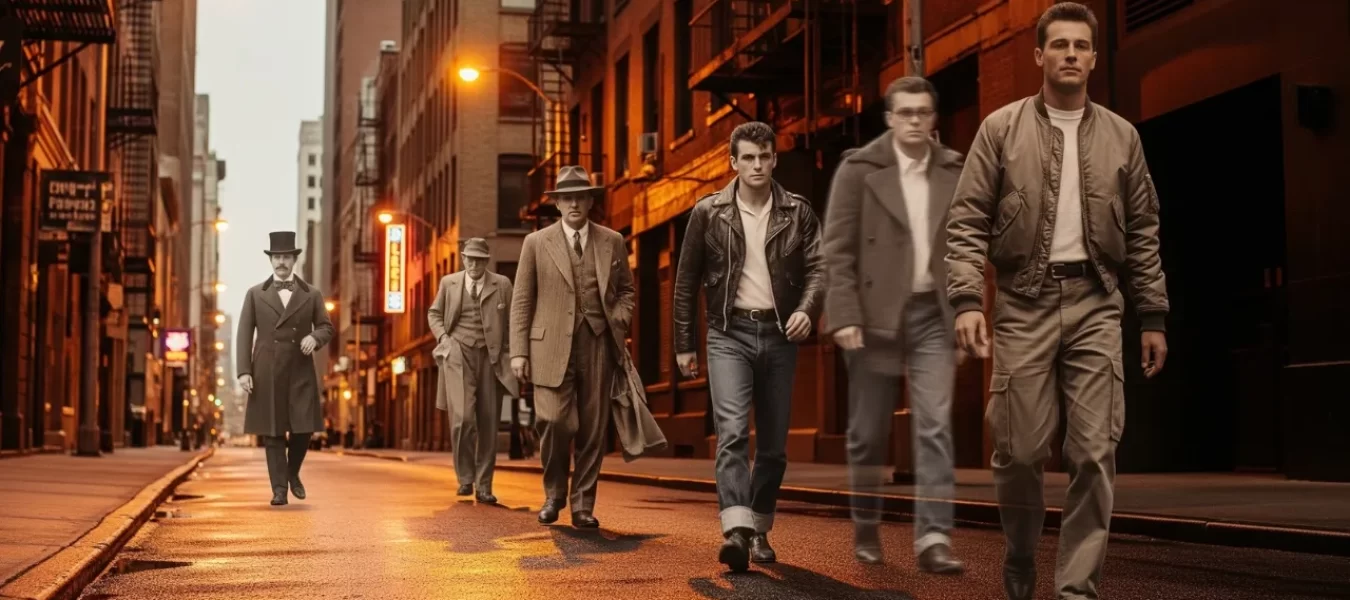
From men’s 70s fashion to 1980s men’s fashion, it’s all still living – just reimagined.
- Modern suits borrow from 1900s tailoring but soften the silhouette
- 90s streetwear is now runway-ready, thanks to brands like Fear of God and Supreme
- 50s camp shirts, 60s slim trousers, and 70s earth tones are current again in collections from Gucci to Zara
Designers love to remix nostalgia. And shoppers? They’re hungry for pieces that carry a sense of story and style.
Vintage or Just Timeless? Why Retro Fashion Cycles Back
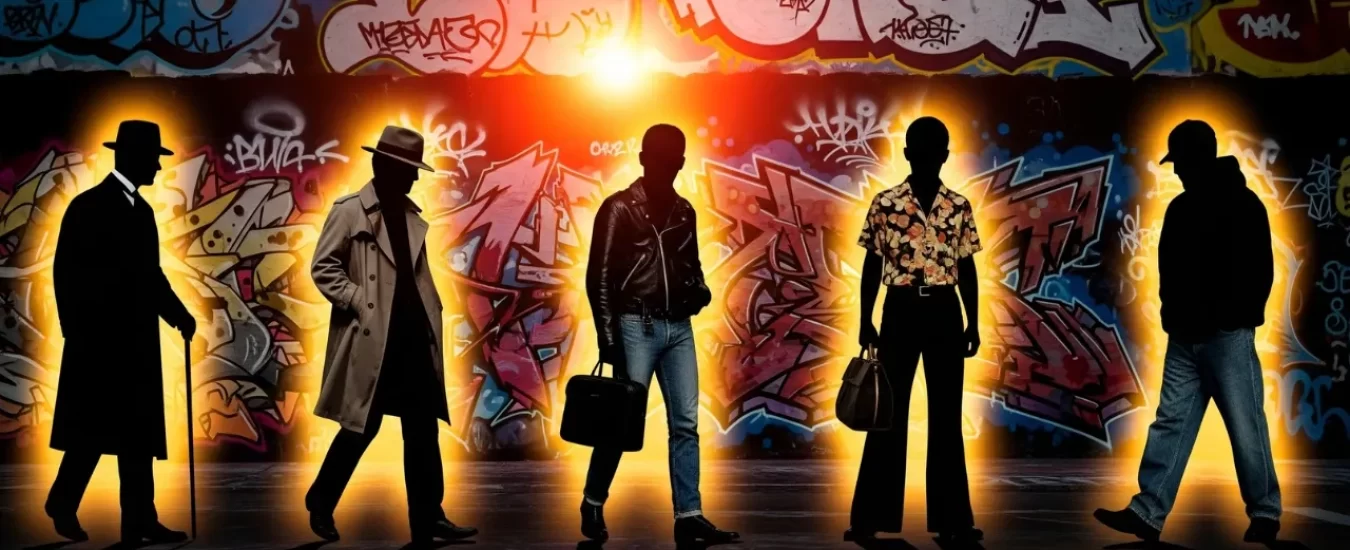
There’s something deeply comforting about retro fashion. It offers certainty, character, and a connection to the past. But when done right, it’s not just nostalgic – it’s timeless.
What makes a style timeless?
- Strong construction
- Cultural resonance
- Versatility across decades
This is why 1900s mens fashion continues to inspire. Its structure, elegance, and detail can be traced across everything from today’s tailored jackets to high-rise pants and polished boots.
Vintage is no longer just for collectors – it’s part of the modern fashion language.
What RYZEAL Thinks About the Evolution of 1900s Mens Fashion
At RYZEAL SOURCING, we believe the history of fashion is the blueprint for its future. 1900s mens fashion didn’t just evolve – it revolutionized how men present themselves, express identity, and adapt to cultural change.
From the carefully pressed trousers of the Edwardian gentleman to the expressive layers of 1990s hip hop, every decade tells a story. As sourcing professionals, we draw from this rich timeline to create apparel that honors heritage, celebrates individuality, and anticipates tomorrow’s trends.

Costing in Garment Industry – How Buyers and Factories Calculate Pricing Effectively
